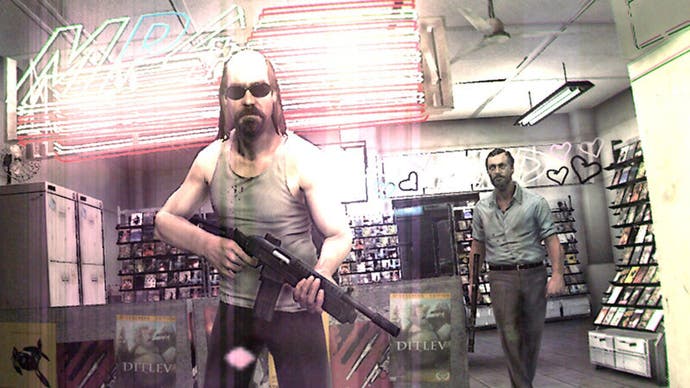Why I Love... Kane & Lynch 2: Dog Days
Low-fi misery.
Few people I know have anything nice to say about Kane & Lynch. No one I've personally talked to about it has had anything particularly noteworthy to say - most of the time general chatter among gamers isn't exactly on par with Shakespeare - but the gist is that the series is bland, full of clichéd characters and generic cover-based gameplay.
Partly I understand these concerns. The first game held some thematic interest insofar as it was interesting to explore the lives of such thoroughly unlikeable characters, but phrases and notions like "poorly structured missions", "inconsistency" and "broken gameplay scenarios," were common among reviews for good reasons, and the whole South American derailing in the final third was more than a little ridiculous.
Io's narrative chops also seem to be more on par with Tony Scott than Michael Mann, meaning the developers have mostly squandered any opportunities to delve into the psychological aspects of Kane's bloodlust or Lynch's wholesale psychoses, which, given the potentially interesting source material the series deals in, is a bit of a letdown.
But despite the tepid reception to the first game, Dog Days is where the developers finally hit upon the grit and filth that Kane & Lynch was always supposed to embody, even if many critics said the game's design still needed work.

Dog Days reunites our would-be anti-heroes in a deal-gone-wrong scenario whose visceral intent isn't shown through a plethora of intense, over-the-top violence, but rather the artful application of its impressively ugly appearance, as Io defaults to a violent shakycam style that would give Paul Greengrass' direction in The Bourne Ultimatum a run for its money.
Light sources burst with distracting reflective glare; artefacting and aliasing crop up in the event of an explosion; pixellation and resolution drops abound. If this were a YouTube video - incidentally exactly the kind of culture the developers were looking to mimic - most of us would hit 'back' on our web browsers to look for an HD version. But this is Kane and Lynch's highest-def - a stark, horrific underworld whose core reality neither man wants to admit exists, even against their better judgment. It has all the subtlety (if not the gratuity) of a snuff film, and it hits you where it hurts.
The immediacy of its style is an effective approach from the get-go. With its imperfect picture opening on a propped-up handheld digital recorder (Io isn't above a little meta-humour), Kane and Lynch are bound to chairs, naked, covered head to toe in open wounds and soaked in blood.
Between jerky cuts to credits, Lynch cries out, a man using a razor to work on him; Kane screams he'll kill their capturer and the frame cuts mid-scene to two days earlier. The blemishes on the visual and aural vocabulary are only a taste to get you properly acquainted with what you soon realise are the motions of Dog Days' aesthetic misery, appropriately setting the tone by tossing the player headfirst into what's very clearly an out-of-hand situation. But it isn't until the gunplay starts that you realise just how well the game translates its experiential qualities directly to the player.

While my Eurogamer colleague Dan Whitehead said there was something "not quite right to the way things move and aim and interact" in his review of Dog Days, I would argue that isn't the necessarily the point. Unlike a lot of other cover shooters, the gameplay is more of a means to an end in the same way that, say, Silent Hill 2's is.
Though its critical reception might suggest otherwise, it's also still competent and perfectly reasonable action game, albeit one that doesn't try to knock you about the same way that Infinity Ward or Epic might.
Still, it's more about embracing the atmosphere than having a more typically enjoyable gameplay experience. The rules of combat and cover are fairly simple, leaving most of the game's expressive personality to its presentation, and when you get into a firefight it really feels like you've stepped into a street war.
The increased action on-screen wreaks havoc on the visuals, and when you inevitably are hit, your POV is distorted with hazy red light and washed out colour. It's a disorientating and ugly metaphor that captures what I imagine would be the chaos of real street violence, even as the engine seems to hiccup and struggle rendering the action (this is only a trick for effect, however).
The camera acts similarly, as though a silent, amateur documentarian is chasing you, following your every move from just a few steps away while using the lowest-grade equipment imaginable; when you run, the muffled sound of wind dominantly cuts into the audio.








